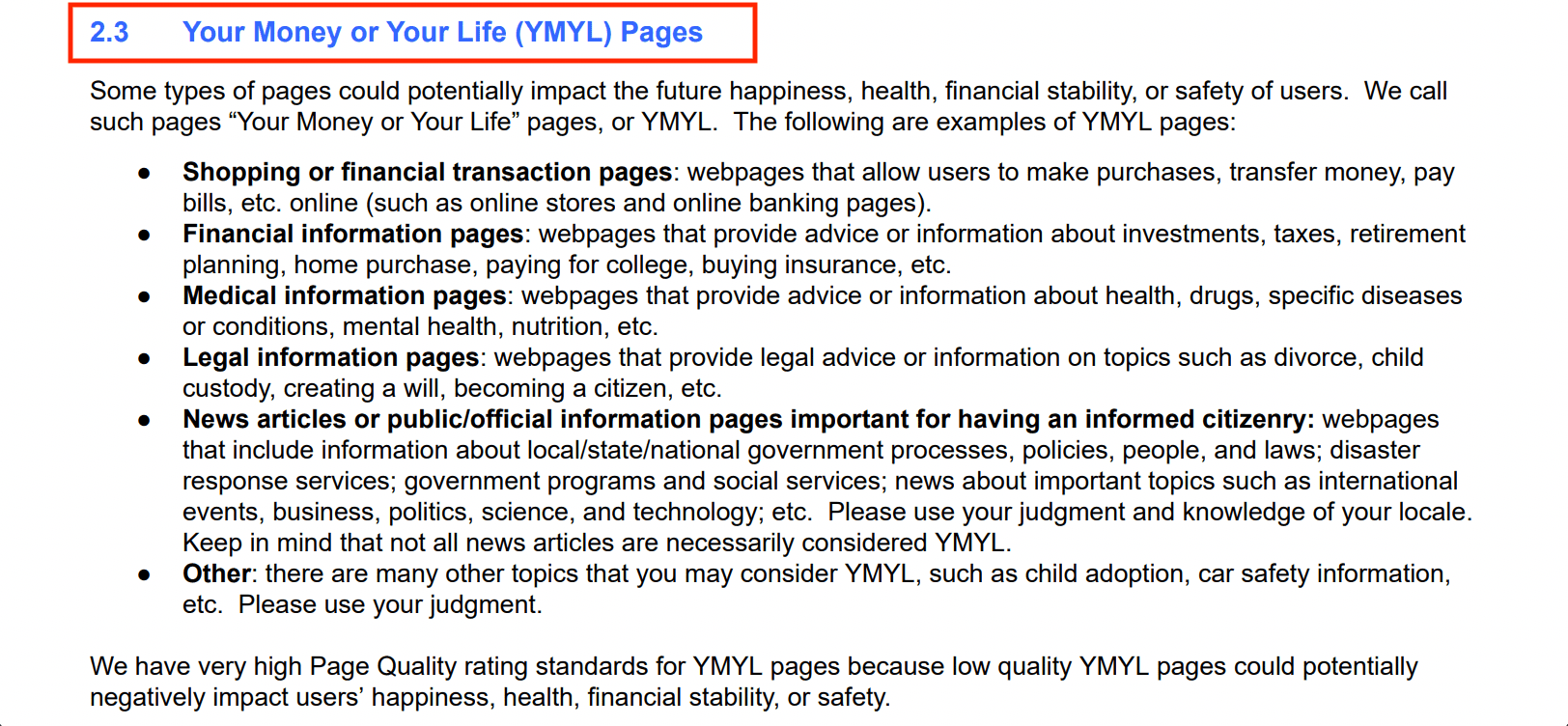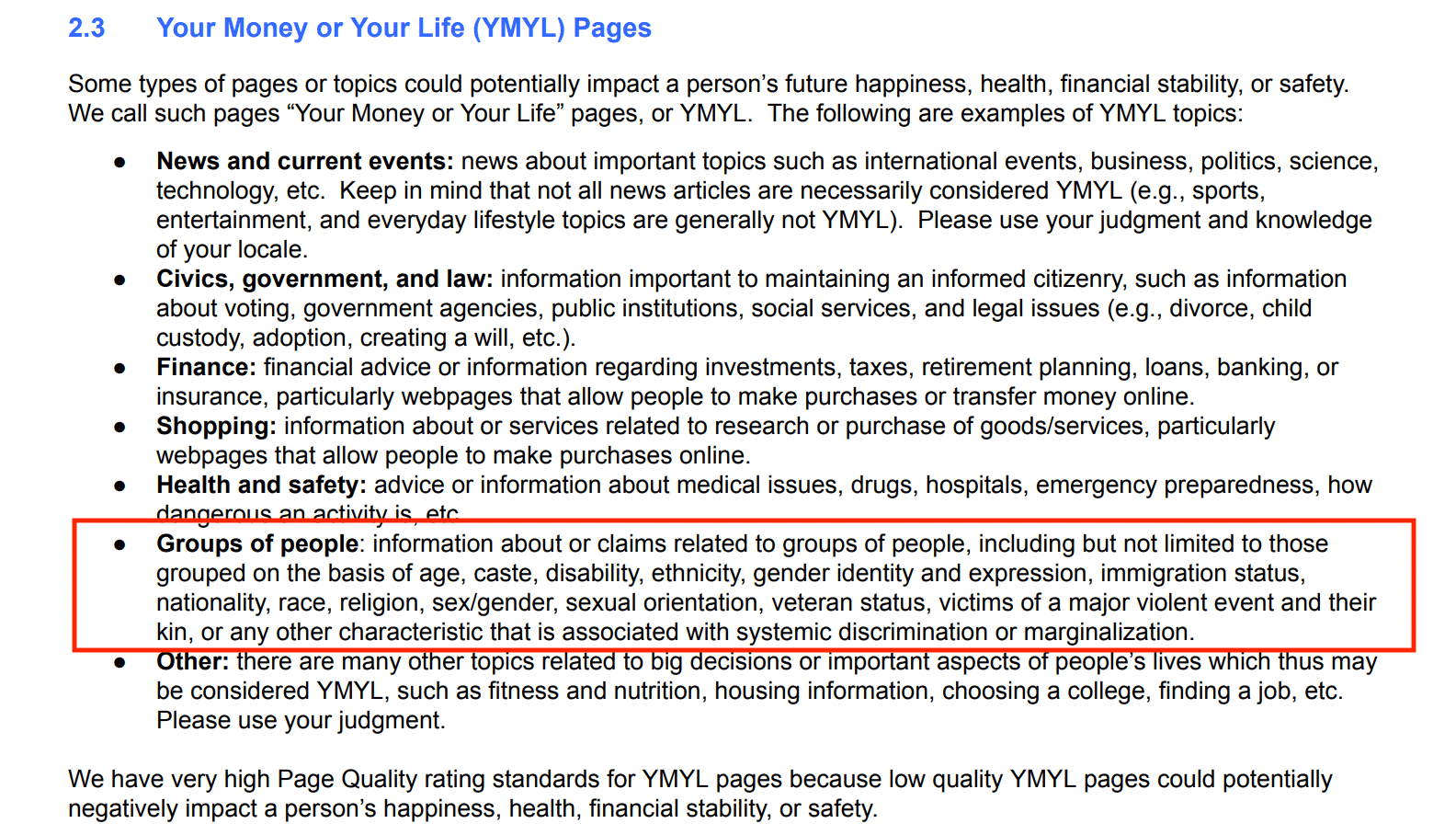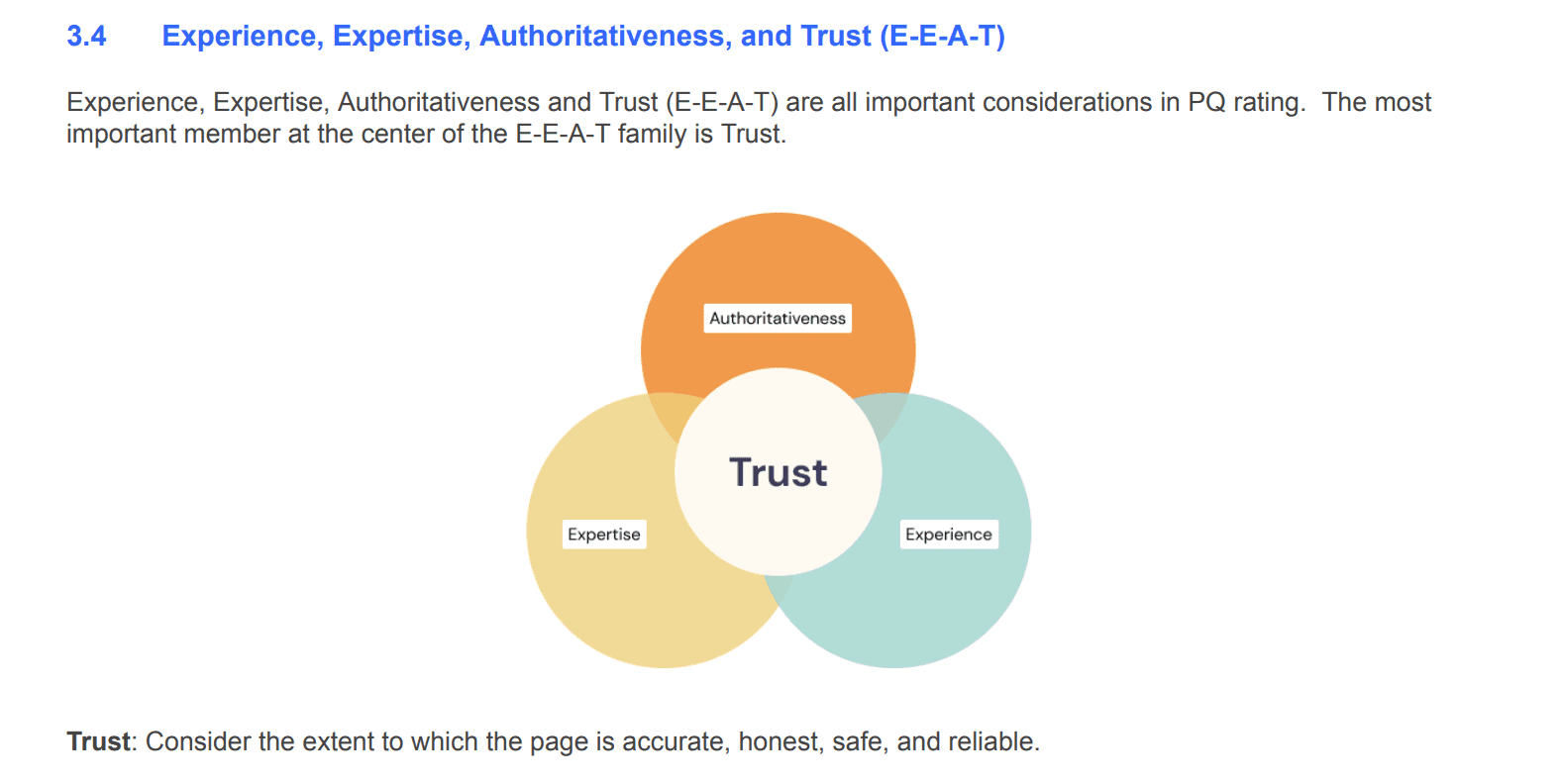
Google’s Quality Rating Guidelines are an important resource for anyone working in search engine optimization (SEO). These guidelines help raters understand what Google considers to be high-quality content, and how to identify low-quality content. By understanding these guidelines, SEO professionals can create content that is more likely to rank highly in Google’s search results.
In this blog post, we will take a deep dive into the changes in Google’s Quality Rating Guidelines over the past few years. We will use the provided resources to explore how these guidelines have evolved, and what this means for the future of SEO.
View the most current Google Quality Rating Guidelines released on December 15th, 2022.
In June 2018, Google updated its Quality Rating Guidelines to include a section on “Your Money or Your Life” (YMYL) pages. YMYL pages are pages that could potentially impact a person’s financial stability or well-being. These pages include, but are not limited to, pages about finance, health, and safety.
According to the guidelines, YMYL pages should be held to a higher standard than other types of pages. They should be “factually accurate, honest, and trustworthy.” They should also provide a “satisfying user experience.”

View the 2018 Google Quality Rating Guidelines.
In May 2019, Google updated its Quality Rating Guidelines to include more information about E-A-T (Expertise, Authoritativeness, Trustworthiness) and YMYL pages. The guidelines now state that YMYL pages should have a high level of E-A-T in order to be considered high-quality.
E-A-T is a term used by Google to describe the level of expertise, authoritativeness, and trustworthiness of a website or webpage. In order for a website to be considered high-quality, it should have a high level of E-A-T. This can be determined by evaluating the content of the website, the expertise of the authors, and the overall trustworthiness of the website.
View the May 2019 Google Quality Rating Guidelines.
In December 2019, Google updated its Quality Rating Guidelines to include even more information about E-A-T and YMYL pages. The guidelines now specify that YMYL pages should have a high level of E-A-T in order to be considered high-quality. They also include a section on how to evaluate the E-A-T of a website or webpage.
According to the guidelines, raters should consider the following factors when evaluating the E-A-T of a website:

View the December 2019 Google Quality Rating Guidelines.
In October 2020, Google updated its Quality Rating Guidelines to include a section on “Page Quality Rating Standards.” This section provides more detailed information on how to evaluate the quality of a webpage.
According to the guidelines, raters should consider the following factors when evaluating the quality of a webpage:

The guidelines also specify that raters should consider the overall user experience when evaluating the quality of a webpage. This includes the design and layout of the webpage, as well as the ease of navigation and the overall feel of the site.
View the October 2020 Google Quality Rating Guidelines.
In October 2021, Google updated its Quality Rating Guidelines to include a number of changes. One of the key changes was the expansion of the definition of the YMYL subcategory “Groups of people.” This subcategory includes pages that provide information or services to specific groups of people, such as children, older adults, or people with disabilities.

The guidelines were also refreshed to provide updated guidance on how to research reputation information for websites and content creators. This includes tips on how to find reliable sources of information and how to evaluate the credibility of those sources.
The “Lowest Page Quality” section was also restructured and updated in the October 2021 update. The section was reorganized and refreshed to include updated examples that reflect the new structure. In addition, the definition of “Upsetting-Offensive” was simplified to remove redundancy with the Lowest Page Quality section.
Other minor changes were made throughout the guidelines in the October 2021 update. These changes included the inclusion of updated screenshots and URLs, the updating of wording and examples for consistency, the removal of outdated examples, and the fixing of typos. These changes were designed to improve the overall clarity and accuracy of the guidelines.
View the October 2021 Google Quality Rating Guidelines.
In July 2022, the Quality Rating Guidelines were refreshed to be aligned with the newly published “Search Quality Rater Guidelines: An Overview.” The guidelines were refined to focus on topics that require a high level of accuracy to prevent significant harm, and a new table of examples was added. The guidelines were also clarified to emphasize that the type and level of E-E-A-T depends on the purpose of the page, and that low quality and harmful pages can occur on any type of website.
The language throughout the guidelines was refactored to be applicable across all device types, and minor changes were made throughout, including the inclusion of updated screenshots, the removal or updating of outdated examples and concepts, and the removal of user location when it was not relevant.
View the July 2022 Google Quality Rating Guidelines.
In December 2022, Google updated its Quality Rating Guidelines with a number of changes designed to make the guidelines more explicitly applicable to all types of websites and content creation models. The guidelines were also clarified to provide better guidance on finding who is responsible for a website and who created the content on a page, especially for different webpage types.
One of the key changes in the December 2022 update was the addition of a summary table with the top page quality considerations involved in rating pages, which carried through to each page quality rating section. The guidelines were also refined and expanded to provide more guidance on the core pillars of page quality rating, including main content quality, reputation for websites and content creators, and experience, expertise, authoritativeness, and trust (E-E-A-T).

The page quality rating sections were also reordered from lowest to highest, and the transitions between these sections were streamlined. The guidelines were also de-duplicated to remove any redundant information or examples. In addition, more guidance and clarifications were added to sections on pages with error messages or no main content, forums and Q&A pages, and page quality rating FAQs.
The December 2022 update also included a number of formatting changes, such as the conversion of lists of concepts and examples into tables throughout the guidelines, and the inclusion of updated language, examples, and explanations for consistency across sections. Outdated examples were removed and typos were fixed as part of this update.
View the December 2022 Google Quality Rating Guidelines.
Google’s Quality Rating Guidelines have undergone a number of changes over the past few years. These changes have focused on different aspects of what Google considers to be high-quality content, including Your Money or Your Life (YMYL) pages, Expertise, Experience, Authoritativeness, Trustworthiness (E-E-A-T), and overall user experience. SEO professionals can use these guidelines to create content that is more likely to rank highly in Google’s search results, and to ensure that their website meets Google’s standards for high-quality content.
As these guidelines continue to evolve, it is important for SEO professionals to stay up-to-date on the latest changes and best practices for creating high-quality content.
Unlock the power of digital visibility to promote your healthcare business. Schedule an Introductory Meeting with our professionals and see how we can leverage SEO tactics to help optimize your content, boost online presence, and stay ahead of Google’s changing Guidelines for maximum success!
[Updated June 26th, 2023]
Google’s Quality Rater Guidelines are a set of instructions provided to human evaluators who assess the quality of search results, helping Google refine its algorithms for better user experiences.
Quality Raters do not directly impact search rankings; however, their feedback helps Google understand the quality of its algorithms and identify areas for improvement.
Quality Raters consider factors like relevance, expertise, authoritativeness, trustworthiness, and user satisfaction to assess the quality and relevance of web pages.
Focus on providing high-quality content that is relevant, reliable, and useful to your target audience. Build a trustworthy online presence, optimize for user experience, and adhere to webmaster guidelines.
Conforming to Quality Rater Guidelines alone does not guarantee high search rankings, as the guidelines provide insights for algorithm improvements rather than determining specific ranking factors. However, aligning your website with these guidelines can positively impact its overall quality and user experience.
